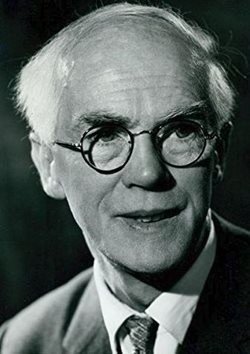About
In Memoriam: Robert William Ditchburn, 1903 - 1987
Aug 05, 2022
 Robert William Ditchburn, Optica Fellow (1965) and recipient of the C. E. K. Mees Medal, passed away on 8 April 1987 at the age of 84. He was known for his work on photo-ionization, solids' optical properties, eye movements' effect on the on visual perception. His research which led to the development and application of methods to stabilize images on the retina will have a lasting impact on the field. Ditchburn was proud to have been able to study under J.J. Thomson and would go on to build the Department of Physics at the University of Reading. Ditchburn was born on 14 January 1903 in Waterloo, Lancashire, England. He went to Bootle Grammar School where his father was the headmaster and taught Mathematics. Ditchburn went on to Liverpool University at the age of 16 where he studied under Professor L. R. Wilberforce and Professor F. S. Carey. He then earned a scholarship to Trinity College and went to Cambridge in 1922. In his time there, he was awarded the Yeates Prize (1924), the Coutts Trotter Scholarship (1925), the Hooper Oration Prize (1925), and the Isaac Newton Studentship (1925-28). In 1928, he moved to Dublin to serve as a Fellow of Trinity College and in 1929 he was elected the chair of Physics at Trinity. Between 1942 to 1945, he went to work as Principal Experimental Officer in the Admiralty Research Laboratory at Teddington. His studies concerned how the human eye adapts in the dark under various treatments and illumination of various colors and intensities with red light in particular.
Robert William Ditchburn, Optica Fellow (1965) and recipient of the C. E. K. Mees Medal, passed away on 8 April 1987 at the age of 84. He was known for his work on photo-ionization, solids' optical properties, eye movements' effect on the on visual perception. His research which led to the development and application of methods to stabilize images on the retina will have a lasting impact on the field. Ditchburn was proud to have been able to study under J.J. Thomson and would go on to build the Department of Physics at the University of Reading. Ditchburn was born on 14 January 1903 in Waterloo, Lancashire, England. He went to Bootle Grammar School where his father was the headmaster and taught Mathematics. Ditchburn went on to Liverpool University at the age of 16 where he studied under Professor L. R. Wilberforce and Professor F. S. Carey. He then earned a scholarship to Trinity College and went to Cambridge in 1922. In his time there, he was awarded the Yeates Prize (1924), the Coutts Trotter Scholarship (1925), the Hooper Oration Prize (1925), and the Isaac Newton Studentship (1925-28). In 1928, he moved to Dublin to serve as a Fellow of Trinity College and in 1929 he was elected the chair of Physics at Trinity. Between 1942 to 1945, he went to work as Principal Experimental Officer in the Admiralty Research Laboratory at Teddington. His studies concerned how the human eye adapts in the dark under various treatments and illumination of various colors and intensities with red light in particular.
In 1946, Ditchburn returned to England to take up the Chair of Physics at Reading University and remained there until his retirement in 1968. At Reading, Ditchburn founded and chaired the Diamond Research Committee and remained as chairman until 1982. He continued to serve as a committee member until 1986. He served as a consultant to De Beers Diamond Research Laboratory and helped establish the basis for synthesizing diamonds. In addition to his academics and research, Ditchburn became involved with the Pugwash movement in Sweden in 1967 which dealt with the threat of nuclear war and related international issues by organizing public meetings, campaigning and producing of several papers for their conferences.
Ditchburn was active in the scientific community and was named a Fellow of the Physical Society of London (1943), and the Institute of Physics (1949). He became a Fellow of The Royal Society in1962 and later served as President of Section A of the British Association in 1969. He was also a member of the British National Committees for Physics, Astronomy, and Radio-Science and the National Subcommittee for Optics and served as chairman from 1961 to 1966.
Ditchburn’s book, Light, first published in 1952 with revised versions in 1963 and 1976, would become the standard textbook dealing with the subject matter. His second major work, Eye Movements and Visual Perception was published in 1973 five years after his retirement.
Optica and the scientific community mourn his loss.
